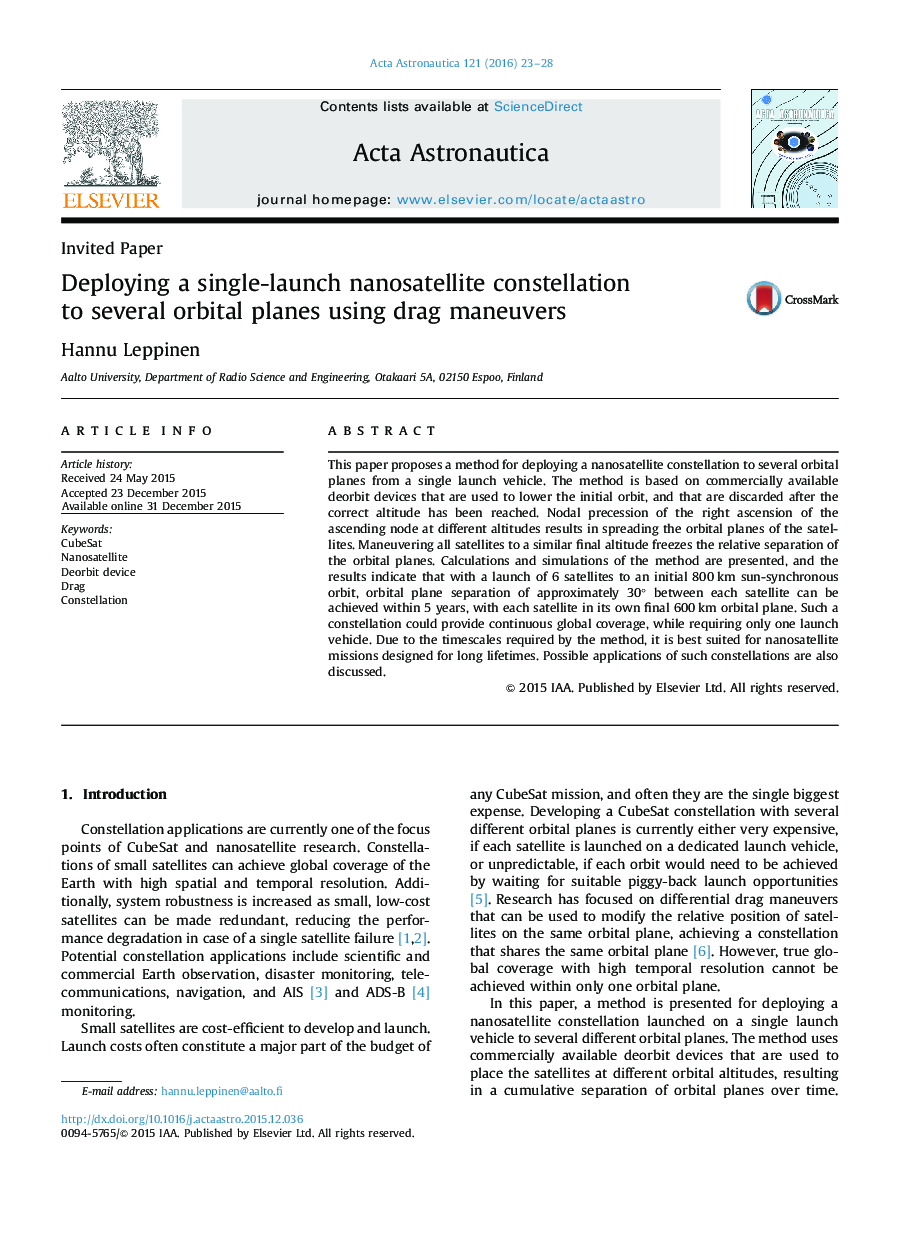| Article ID | Journal | Published Year | Pages | File Type |
|---|---|---|---|---|
| 1714212 | Acta Astronautica | 2016 | 6 Pages |
•A method is presented for a single-launch nanosatellite constellation deployment.•The method is based on using deorbit devices and then discarding them.•Satellites in different altitudes result in separation of orbital planes.•Final orbits have similar altitude to freeze the orbital planes.•A single launch vehicle can achieve a global constellation.
This paper proposes a method for deploying a nanosatellite constellation to several orbital planes from a single launch vehicle. The method is based on commercially available deorbit devices that are used to lower the initial orbit, and that are discarded after the correct altitude has been reached. Nodal precession of the right ascension of the ascending node at different altitudes results in spreading the orbital planes of the satellites. Maneuvering all satellites to a similar final altitude freezes the relative separation of the orbital planes. Calculations and simulations of the method are presented, and the results indicate that with a launch of 6 satellites to an initial 800 km sun-synchronous orbit, orbital plane separation of approximately 30° between each satellite can be achieved within 5 years, with each satellite in its own final 600 km orbital plane. Such a constellation could provide continuous global coverage, while requiring only one launch vehicle. Due to the timescales required by the method, it is best suited for nanosatellite missions designed for long lifetimes. Possible applications of such constellations are also discussed.
